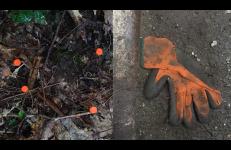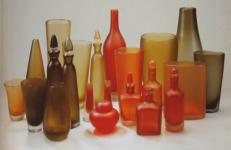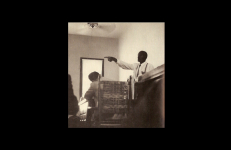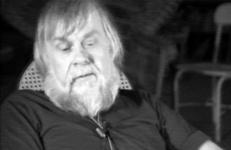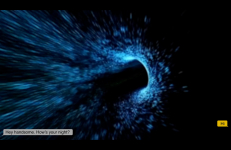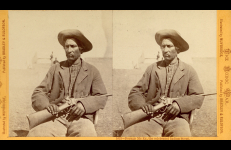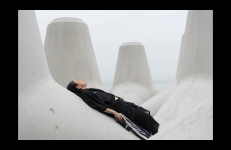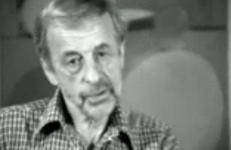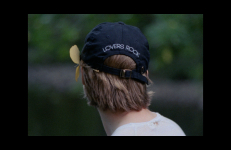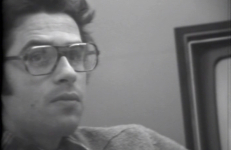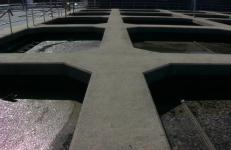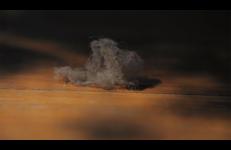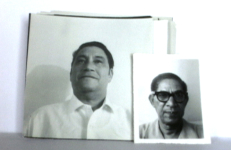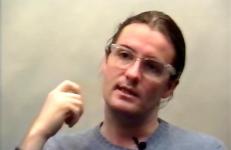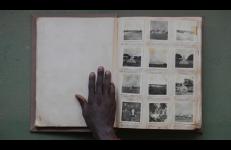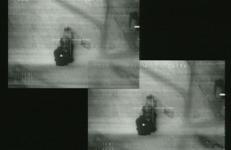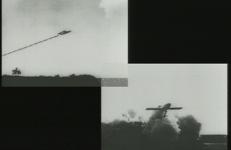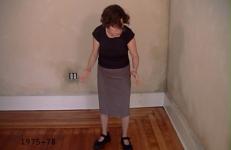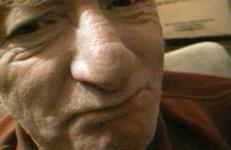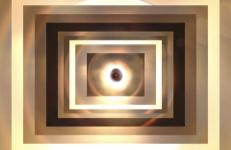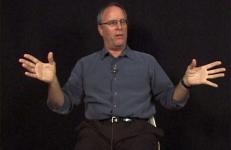Dennis Adams (b. 1948) is an American conceptual artist whose work includes photography, text, and installation. Adams is best known for his projects involving structures placed in urban bus shelters, uncompromisingly inserted into the public sphere. These politically charged photographs and their accompanying texts are not used to make overtly ideological statements, but are open-ended in ways that challenge viewers to test their own convictions.
Photography
For over two years we made it our business to document abandoned working gloves on the streets of NYC. The feelings and thoughts that surrounded this activity connected to the ways his family relates to Gregor Samsa as a cockroach, or whatever Franz Kafka intended him to be in The Metamorphosis after his transformation from a productive citizen to a useless insect. When Gregor can't grant them a comfortable life-style any longer, his family starts to resent and hate the once loved and respected provider, finds him disgusting.
At the heart of Alone With You is the notion of impassioned avarice, i.e. the kind of motivated acquisitiveness that drives both erotic desire and obsessive collecting.
Animated Contingencies is an animated documentary that looks at how sketches take the place of photography in courtroom settings. Andrews focuses on how two different representations, a photograph and a courtroom sketch, capture the moment Moses Wright, Emmett Till's uncle, pointed out Till's murders while on the witness stand at their trial. The work then examines the authority of photographic evidence and how animated representations can provide both visibility and anonymity in testimony and other contexts.
From his photo-text canvases in the 1960s to his video works in the 1970s to his installations in the 1980s, John Baldessari’s (b.1931) varied work has been seminal in the field of conceptual art. Integrating semiology and mass media imagery, he employed such strategies as appropriation, deconstruction, decontextualization, sequentiality, and text/image juxtaposition. With an ironic wit, Baldessari's work considers the gathering, sorting, and reorganizing of information.
From an isolated wooded cabin a trans man star gazes, scruff chats with guys, watches YouTube tutorials, takes drugs, and lies about taking drugs - feeling his way through a cosmology of embodiment. Relative to the immensity of longing, the bodily insides become both portal and lens through which to probe the porousness between interior and exterior, the micro and macro. Nudes and landscapes are equally erotic, as Eros is an issue of boundaries: When i desire you, a part of me is gone.
Before his legendary proto-cinematic studies in motion, photographer Eadweard Muybridge was commissioned to document the United States Army’s war against the Modoc tribe in Northern California in a series of stereographs, many of them staged. Alternately unnerving, meditative, and explosive, Black Glass examines the entangled histories of visual technology and the genocide and expropriation of Indigenous populations by white settlers through a violent collision of image and sound.
A Body in Fukushima is a film created by dance artist Eiko Otake consisting of still photographs, inter-titles, and an original score. Photographs are selected from tens of thousands taken by historian/photographer William Johnston of Otake alone in the surreal landscapes of post-nuclear meltdown Fukushima, Japan. Otake edited the film and sound, which includes original music by Kronos Quartet’s David Harrington.
Horace Bristol discusses his long career in photography, which began with shooting for Life and Fortune magazines in the 1930s. His photojournalism took him to the Dutch East Indies and post-war Japan. His documents of Depression-era workers famously inspired John Steinbeck to write the classic The Grapes of Wrath. “I felt I was not an artist but a worker, so as a photojournalist, I had a job to do,” Bristol says.
Produced by the Fellows of Contemporary Art on artists exhibiting in a Pasadena Armory exhibition.
Los Angeles-based, Kaucyila Brooke (b.1952) makes what she describes as, "wall size photographic sequences in comic-strip format that consider lesbian relationships within American popular culture." Produced over the past five years, Brooke’s large-scale photo-text installations look at aspects of lesbian culture and alternative communities. Wry and often quite critical, they probe some of the ways lesbian relationships both challenge and reproduce the power relations and narratives of the wider culture.
Rudy Burckhardt (1914-1999) was best known as a photographer and filmmaker. He moved to New York from his native Basel in 1935 at age 21. He shot portraits of many artists for Art News during the 1950s and early ’60s, capturing their work methods in candid and intimate photos. His films, frequently portraying cityscapes and urban life, include The Pursuit of Happiness (1940), Under the Brooklyn Bridge (1953), What Mozart Saw on Mulberry Street (1956), Square Times (1967), and Inside Dope (1971).
To better understand what he has, filmmaker Cam Archer revisits former subjects, rephotographs them, and seeks new inspiration.
Robert Cumming (b. 1943) is an American photographer/sculptor/bookmaker who borrows from the artifice of theatrical sets to construct his elaborate and often absurd images. He has also published several books of photography and narration. Central to his work is his desire to remind us that we are looking at a photograph, and not at the thing being photographed. His captions sometimes draw on a photograph's narrative aspects or are used to mislead the viewer.
Dark Sun Squeeze is a darkly meditative exploration of a sewage treatment plant, revealing the hidden rhythms and bizarre journey of raw human waste. The images of flowing waste speak of decay, destruction, of madness inherent in excessive consumption. At the same time they reveal the redemptive side of detritus, its regenerative potential, the sublime that exists in the abject.
“Paweł Wojtasik delivers the final word on the absolute value of news, money, politics and just about everything else.”
-- Holland Cotter, The New York Times, Oct 1, 2004
A domestic portrait rendered at miniature scale, Dust Studies brushes along the edge of what can be seen. Staying close to the ground to collect what gathers there, the film looks deeply for everyday things and finds them drifting in the pleasant, meandering headwaters of a young child's language.
Note: This title is intended by the artist to be viewed in High Definition. While DVD format is available to enable accessibility, VDB recommends presentation on Blu-ray or HD digital file.
Small biographies and musing generalizations--men’s relations to each other and their lives. There is hope and loneliness, companionship and isolation and the simplest of filmic elements to contrast the complexity of human emotions. The delicacy of the formalist writing moves the listener from intimacy to universalism and back again, swaying gently to and fro like the rocking of a ship. The minimalism of the photographic presentation allows the viewer to recognize the humanity in each individual document of a body.
Berlin-based Danish artist Olafur Eliasson complicates and simulates perception through his installations, sculptures, and photographs. He has created disorienting artificial illuminations and reproduced natural phenomena such as clouds, glaciers and the sun through large-scale, high-tech installations.
The Embassy deals with the codes of representation used by the former Portuguese colonial power over the West African country Guinea-Bissau, and with modes of memory production. It shows a photo album depicting the perspective of the Portuguese colonist, who photographed with documentary diligence landscapes, people, architecture and monuments in Guinea-Bissau in the 1940s and 1950s.
The film centers on the images of the Gulf War, which caused worldwide outrage in 1991. In the shots taken from projectiles homing in on their targets, bomb and reporter were identical, according to a theory put forward by the philosopher Klaus Theweleit. At the same time it was impossible to distinguish between the photographed and the (computer) simulated images. The loss of the 'genuine picture' means the eye no longer has a role as historical witness. It has been said that what was brought into play in the Gulf War was not new weaponry, but rather a new policy on images.
“The third part of the Eye/Machine cycle structures the material around the concept of the operational image. These are images which do not portray a process, but are themselves part of a process. As early as the Eighties, cruise missiles used a stored image of a real landscape, then took an actual image during flight; the software compared the two images, resulting in a comparison between idea and reality, a confrontation between pure war and the impurity of the actual. This confrontation is also a montage, and montage is always about similarity and difference.
The Fancy is a speculative, experimental work that explores the life of Francesca Woodman (1958-1981), evoked by the published catalogues of and about her photographs. Structural in form, the video radically reorganizes information from the catalogues in order to pose questions about biographical form, history and fantasy, female subjectivity, and issues of authorship and intellectual property.
An alcoholic, emaciated father; a grossly obese, tattooed mother; a goofy, hormone-addled brother—all together in a claustrophobic council flat. Welcome to the Billinghams'. Richard Billingham wowed the art scene with his book Ray's A Laugh. Fishtank, his first film, charts the emotional territory of the flat and the family who play out their lives within its confines.
Decidedly low-tech, this optical abstraction begins with a shot of an aluminum reflector inside a lamp; a lightbulb in the shot’s center flicks on and off. As the video plays on, nearly identical shots are superimposed, but at a steadily decreasing scale, resulting in an array of nested rectangles. The rhythmic blinking of intense light- accompanied by audible clicks from the plastic light switch- presents the viewer with a swift progression of blinding geometries, (with) dizzying effects.
-- Michelle Grabner, Artforum, May 2010
Richard Ross discusses his interest in photographing museums—their display of objects, frames, the entire context—in order to question our definitions of the museum. The video also covers his ongoing series of triptychs made using a child’s plastic camera, which Ross turns into “art historical soap operas” by playing off the interactions of the groupings.
Only available on the Fellows of Contemporary Art compilation.
This extensive interview with California artist Doug Hall (b. 1944) provides unique insight into the culture and politics of experimental artistic production during the 1970s. Discussing the founding of the performance group TR Uthco, Hall offers context for his contribution to the field of video art, and shares stories of his collaborations with Ant Farm, Videofreex, and others. Ranging from his early years as an art student, to his romance with artist Diane Andrews Hall, to reflections on technology in art, this interview importantly extends the discourse surrounding topics of archive, performativity, and autobiography—subjects that have come to define the contours of video art today.





